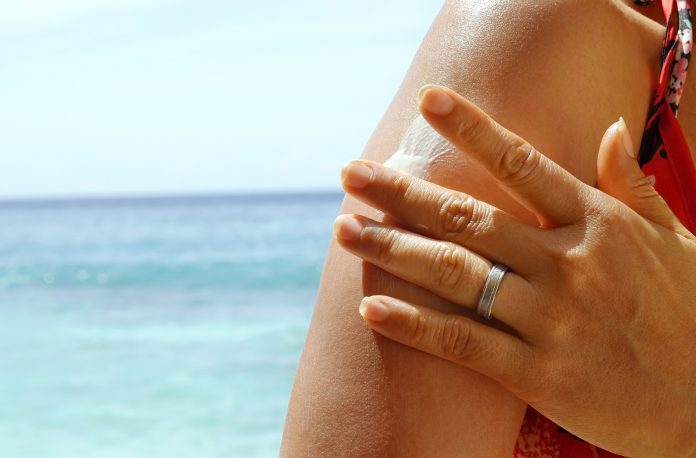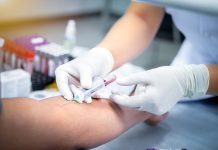Dr Paul Banwell walks us through what we need to know about ultraviolet radiation and skin cancer
There are different types of skin cancer; non-melanoma skin cancers and malignant melanomas.
Non-melanoma skin cancer refers to a group of cancers that slowly develop in the upper layers of the skin. These are the more common types of skin cancer.
The main types of non-melanoma skin cancers are Basal cell carcinomas and squamous cell carcinomas.
The less common type of skin cancer is known as melanoma, which can be more serious. Melanoma is a type of skin cancer that can spread to other organs.
The most common sign of melanoma is the appearance of a new mole or a change to an existing mole. Although it can happen anywhere, it’s most common on the back for men and the legs for women. They’re uncommon in areas that are protected from the sun’s UV rays, such as the buttocks and the scalp. Usually, melanomas are irregular in shape and have at least two colours. So it’s important to remain vigilant for moles that change in shape, colour or size or can sometimes itch and bleed.
Skin cancer in the UK
According to The British Skin Foundation, “Skin cancer is the most common form of cancer in the UK. At least 100,000 new cases are now diagnosed each year, and the disease kills over 2,500 people each year in the UK – that’s seven people every day”.
“Skin cancer is the most common form of cancer in the UK. At least 100,000 new cases are now diagnosed each year, and the disease kills over 2,500 people each year in the UK – that’s seven people every day.”
Most cases of skin cancer are caused by overexposure to ultraviolet (UV) rays from the sun, tanning beds or sunlamps.
Over the last ten years, melanoma skin cancer among men in the UK has increased by almost 50%. Rates for women have risen by 30% during the same period, according to a Cancer Research UK funded study.
Several factors make someone more at risk of getting skin cancer, including; those who are exposed to prolonged and excessive sun exposure and sunburns.
And in general fair-haired, red-haired and fair-skinned people, as well as those with familial syndromes, are most prone to it.
Men are also more likely to get skin cancer than women, almost twice as likely. This is largely because men spend more time in the sun than women and are less likely to protect themselves.
There are a number of individual risk factors for skin cancer, including:
- Fair skin
- Skin that already has freckles, pigmentation and burns easily
- Blue or green eyes
- Blonde or red hair
- A large number of moles and moles of a certain type, one study found that having more than 11 moles on your arm could mean you’re at a higher risk of melanoma
- A family history or skin cancer
- You’ve had skin cancer before
- Being older
I would say that the rise in the number of cases of skin cancer is due to a combination of factors. One of these factors is the ageing population, in addition to lifestyle factors such as unhealthy diets with too much processed food, a lack of exercise and alcohol and tobacco abuse. However, exposure to the sun’s harmful UV rays is also a huge factor and a broad- spectrum SPF is vital – regardless of the weather. The damage from UV exposure is cumulative and gradually increases your risk of skin cancer over time. The damage builds up and triggers mutations that can cause skin cells to multiply rapidly, leading to malignant tumours.
Adopt healthy lifestyle to reduce cancer risk
People must adopt healthy lifestyles to reduce the risk of cancers to maintain optimum health for as long as possible. I think that it’s vital that we all look at our overall health as a bigger picture, and try to make lifestyle changes which aid overall health such as quitting smoking, reducing alcohol intake, getting to a healthy weight, eating a varied and nutritious diet and protecting skin from the sun’s harmful UV rays using a broad spectrum SPF that is then reapplied regularly throughout the day.
Protecting skin from the sun’s damaging UV rays is a key part of the battle against skin cancer. Fortunately, skin protection in the form of SPF is better and more advanced than ever before, however, people continue to apply it too sparingly and not often enough.
To achieve maximum protection against UV radiation, sunscreen should be applied to everything that’s being exposed to the sun, even the scalp. Guidelines suggest you should apply around two teaspoons of sunscreen for the head, arms and neck, and two tablespoons for your entire body, for example, when wearing a swimming costume. It’s important not to miss hard-to-reach areas or areas such as fingers, toes, between toes and feet.











